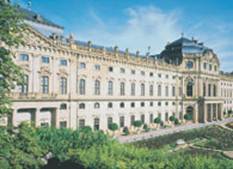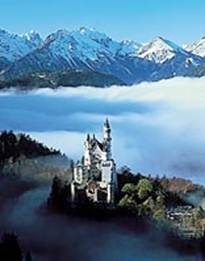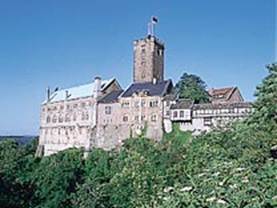 Реферат: Tourism in Germany
Реферат: Tourism in Germany
Highlights:
- Cape Arkona with the little town of Vitt
- the fishing port of Sassnitz with its fishing museum
- "Piratenschlucht" (pirate´s gorge) in Sassnitz
- Greifswald's museum with an exhibition of paintings by Caspar David Friedrich
- historic craftsmen's dwellings in Gingst
- Grümbke lookout tower near Neuenkirchen
Activities:
Jasmund offers a wide range of guided tours (daily
tours take place from April - September, both from the parking lot in Hagen to the Königsstuhl and from Sassnitz to the bizarre rock formations of
"Wissower Klinken").
Furthermore, you can visit numerous exhibitions (at the national park
visitors´ center at the Königsstuhl and also at the Granitz hunting
lodge near Sellin).
The biosphere reserve "South East Rügen" organises further
hiking and bicycle tours, as well as excursions.
B) The Wadden Sea of Hamburg National Park
The Wadden Sea of Hamburg National Park, which is the smallest of
three mud-flats national parks, is characterized by three islands:
"Neuwerk", widely covered with meadows and with a population of 40,
"Scharhörn", with its sand dunes, and "Nigehörn"
which has been created artificially. The island group is located directly at
the mouth of the river Elbe near Cuxhaven in northern Germany and protects a landscape of approximately 12,000 hectares of wadden sea.
On guided tours you not only have the opportunity to
learn about the region´s landscape but also about the islands´
historical background.
On the way from Neuwerk to Scharhörn you will walk along trails leading
across seemingly endless mud-flats. Scharhörn, which used to be a
sandbank, is a tourist attraction mainly for its sea bird colonies. On a visit
to the ornithological station you will see one of the largest colonies of sea
swallows.
Highlights:
- carriage ride across mud-flats from Sahlenburg to
the island of Neuwerk
- voyage with the MS "Flipper" from Cuxhaven to the island of Neuwerk
- guided walks across the Wadden sea
- guided tours to the bird colonies, salt marshes and wadden sea of Neuwerk
- guided tours to Scharhörn, the bird sanctuary
- searching for amber on the "Kleiner Vogelsand"
- amber exhibition on the island of Neuwerk
Activities:
We recommend national park visitors on day trips to
take a walk along the main dyke, from which you can see the foreshore with its
bird colonies but also the island´s interior. Cars are banned on the
islands. For this reason tours, for example, to the fortified tower of the island of Neuwerk, through the salt marshes of the foreshore with their abundance of flora
and fauna, or to the "Ostschleuse" lock, can either be made on foot
or by horse-drawn carriage.
C) The Wadden Sea of Lower Saxony National Park
Make a
trip to one of the most impressive wadden sea landscapes. High up, in northern Germany, at the North Sea coast of Lower Saxony, the Wadden Sea of Lower Saxony National Park is
located. It protects the wadden seas landscape between the river Ems and the
river Elbe, including the offshore East Frisian Islands. The national park
offers amazing natural spectacles and various landscapes, such as salt-marshes,
which are typical of this region, the steep coast near Dangast and the
"swimming bog" near Sehestedt, Germany's only remaining bog landscape
located outside the country's dykes
Highlights:
- Wadden Sea House in Wilhelmshaven
- Norddeich seal station
- Lightship and whale-bone fence on the island of Borkum
- Fisherman's House Museum on the island of Norderney
- Dornumsiel Castle, surrounded by water
- German Shipping Museum in Bremerhaven
- Old lighthouse on the island of Wangerooge
Activities:
The surrounding area offers a wide range of
sightseeing opportunities, such as the East Frisian islands of Juist and
Norderney. Whether you want to go swimming and enjoy the broad beaches, take a
ride in a carriage across the island or a walk through the salt-marshes, the
national park´s recreation and leisure program will guarantee a lot of
fun and relaxation.
D) The Wadden Sea of Schleswig-Holstein National Park
Welcome to the Wadden Sea of Schleswig-Holstein National Park, the largest national park in central Europe. One third of Schleswig-Holstein belongs to the world´s largest uninterrupted wadden sea landscape, which reaches from the North Sea coast of the Netherlands up to Denmark. The wadden sea, a stretch of land affected by tides, are flooded by sea water during high tide and remain dry during low tide, a unique phenomenon worldwide. Experience an oceanic landscape as near to nature as it can be, with dunes, beaches, salt-marshes and "Halligen", small islands which are not protected by dykes and therefore become flooded whenever there is a spring tide or a heavy storm.
Experienced guides will show the amazing spectacle of low and high tide. You can watch how, after six hours of low tide, the wadden sea become flooded again and the deep, artificially constructed furrows - called 'Priele' - fill with water. Whether you go swimming in the sea, take a walk along the beach or over the mud-flats, join a boat tour or watch the birds in the salt-marshes - your holiday in the Wadden Sea of Schleswig-Holstein National Park will definitely be relaxing, for both body and soul.
Highlights:
- Multimar
Wattforum in Tönning, a national park center
- Husum, with its old river port and museums
- ride in a carriage to the Südfall Hallig
- guided hiking tour across the mud-flats
- Nordstrand tourist information center with its aquarium
- Friedrichskoog seal station
Activities:
One of many possible sightseeing opportunities is a
trip to the small fishing villages which belong to the national park. You can
also go on a boat tour to the seal banks and observe a unique and fascinating
animal spectacle.
4.3. Routs in Germany.
Germany’s first “Vacation Routes” and “Scenic Routes” date back to 1927, each carving a path dedicated to a particular cultural or scenic theme. Today, some 150 such routes exist, and millions of people travel them annually. Discover Germany along the “German Castle Road,” “German Fairytale Road,” or the most famous, the “Romantic Road.” Whatever your interest, our Scenic Routes will guide you on a fun and exciting vacation.
A) The “Romantic Road.”

Wuerzburg Residence Palace
In every traveler's life, there are never-to-be-forgotten moments. One of them is the transformation that begins at the exit from the A-7 Autobahn, where you enter the Romantic Road. One of the most famous of the German Vacation Routes wends its way from Wuerzburg to Fuessen.
The Romantic Road is a 220-mile journey from the River Main to the Alps that offers the traveler what is simply one of the most beautiful and most engaging melange of scenery, cuisine and ambience Germany can offer.
It's all gorgeous - the stunning Wuerzburg Residence Palace, the centuries-old panorama and magical atmosphere of Rothenburg-ob-der-Tauber and Dinkelsbühl, the Roman remains in Augsburg, Bavarian King Ludwig II's unforgettable dream- castle of Neuschwanstein.

Castle of Neuschwanshtein
Wherever travellers find themselves on the Romantic Road, exceptional cuisine, delicious wines, glorious land- and city-scapes, castles, churches and fortresses inspire the appetite and the soul. Here, in one of the most charming and beautiful sections of Germany, even the most cynical and unromantic traveler cannot help but be seduced.
B) The Classic route.
Whether
we pass through Erfurt, Weimar, Jena or Gotha, names such as Goethe, Schiller,
Wagner and Strauss always linger on any trip through the "green heart of Germany".
The town of Eisenach is known as the home of the "Wartburg", the
castle once inhabited by the famous Martin Luther. It is also, however, the
city of minstrels and birthplace of Johann Sebastian Bach, whose history can be
traced in the local "Bach House" museum. Eisenach is a medieval town
which both Goethe and Wagner liked to visit, and it is a joy to wander through
the splendid forest landscapes of this area.

Wartburg castle
Along the
classic route, Gotha is also worth a visit. The "Friedenstein Palace" and annual events such as the "Ekhof Festival" all contribute to give
the town a unique touch. In Arnstadt, we reach "the gateway to the Forest of Thuringia ".
Excursions to the "Wachsenburg Fortress", "Gleichen Castle
Ruins" and "Mühlburg Ruins" are highly recommended.
Next stop is Weimar, "European Cultural City 1999", which links to Goethe and Schiller. Besides "Goethe's
residence", his "summer-house on the Ilm" and the "German
National Theater", the "Goethe National Museum" represents a special
attraction in the city. Not far from Weimar is a town called Jena, known
foremost for the work and life of Friedrich Schiller and which has therefore
become a popular destination.
С) The Castle Road


